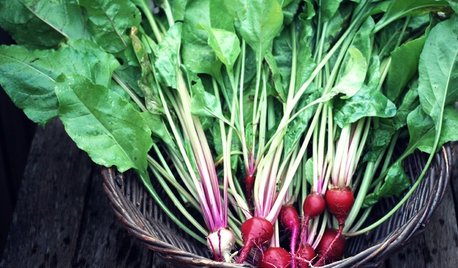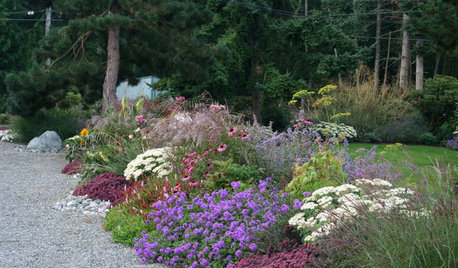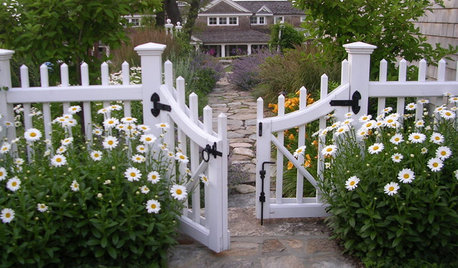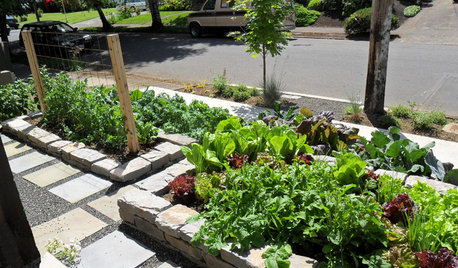Most of the time I try to garden as naturally and as organically as possible, and most of the time it works out just fine.
So, for normal years, I feed the soil and let the soil feed the plants. That works well too, although it is harder to achieve with container-grown plants since the heavy watering they require often leaches nutrients out of the soil. I avoid the high-nitrogen chemical fertilizers because they tend to give you foliage at the expense of the roots and fruits. When you see someone who has huge, lush, green tomato plants with simply gorgeous dark green color in June and little to no fruit set, you can almost bet their plants have too much nitrogen.
When the weather turns up the heat early like it did this June, folks in our part of the country often have great difficulty in getting their tomatoes to set fruit even if they have been very careful to avoid excess watering and excess nitrogen. This is caused, of course, by hot weather and high humidity. Most years you cannot do a lot about it, especially if you're in a part of the state where the nights do not cool down very much. (This year, that would be a huge portion of the state.)
Sometimes, though, in the midst of these heat waves, we have a "cold front" come through like we did a couple of weeks ago. During a summer cold front, if that cold front drops your daytime and nighttime highs back down low enough (below 95 for daytime, and anywhere below about 92 is perfect, and below about 75 at night), you probably will have additional blooming and fruit set on your tomatoes.
So, when we knew the most recent cold front was coming, I went to Lowe's and bought Green Light Super Bloom which has an N-P-K of 12-55-6. I could have used the Miracle Grow Bloom Booster with its N-P-K of 15-30-15, but I REALLY wanted to encourage bloom and fruitset, so I went with Green Light's higher P formulation. Did it work?
You betcha! We had a very heavy fruit set that was beginning to break color as the cold front approached. Since we'd had a very hot summer after the initial fruit set in May, I was desperately hoping for more blooms and fruit and knew the coming cold front was our "best chance". Therefore, I fed the plants the Super Bloom about 3 or 4 days before the Cold Front arrived. I think, if I had done it 5 or 6 days before the Cold Front arrived I might have had even better results. However, I'm happy with the results I've seen. We had lots of blossoms and I am seeing a lot of small new tomatoes, so the manipulation seemed to help.
Was it necessary to feed the tomato plants a bloom booster? Nope. I just did it as a little extra insurance. We would have had "some" blooms and fruit set without the bloom booster, though likely not as many.
If another cold front approaches this summer, I'd try it again. The so-called cold front that is expected here in Love County about Wed. or Thurs. won't cool us down enough---we'll still be in the mid- to upper-90s, but at least we won't be in the 100+ temperature range. So, I won't try it this week, but if you are further north and the cold front is going to take you down to the right temps, it might be worth your while to try it. Do it sooner rather than later for the best results. You should feed your tomato plants (I fed my pepper plants too with the same results on the hot peppers) a few days before the cold front arrives, so the food has time to 'force' new blooms that will be able to set fruit when the temps are cooler.
And, no, I did not do it in a scientific way...feeding half and not feeding half so I could compare the results because I wanted to feed them all. The number of blooms/small tomatoes I'm seeing since the feeding/cold front, though, have convinced me it worked.
Ever since reading Dr. Meisner's Giant Tomato book, I have pondered the idea of using a bloom booster, although growers of giant tomatoes use it in spring to encourage early and large flowers. I used it at a different time to encourage mid-summer fruit set that is hard to achieve here.
You also could use a bloom booster to get good fruit set on your fall tomatoes when the first 'cool spell' of fall is coming and your fall tomatoes are ready to set their first fruit ever.
And, for your tomato newbies, it is the larger-fruited tomatoes, the type we use for slicing, that have fruit set issues in hot weather. The ones that produce really small fruit like grape, currant, cherry and small pear sized ones set fruit all summer long. Most paste tomatoes also set well all summer long. A select few of the ones that produce smallish tomatoes (bigger than Large Red Cherry, but smaller than Early Girl in mid-summer) like Livingston's Gold Ball, Fourth of July, Porter, etc. also don't slow down much in the heat. The ones the Bloom Booster help with are those like Better Boy, Jet Star, Primetime, Supersonic, Goliath, Black Krim, Brandywine, Cherokee Purple, Chocolate Stripes, Nebraska Wedding, Royal Hillbilly, Brandy Boy, etc.
And, if you are in a low-humidity area, and especially a low-humidity area where the nights still dip into the 60s in the summer, you may not have the fruitset issues. I think the lower humidity helps fruit set. In years when Love County is in severe drought, I often get fruit set on large-fruited tomatoes in August when the daytime highs exceed 105 and the nighttime lows are in the 80s. The difference? Very, very low humidity. One of my best tomato years ever was in 2003 when we only had 18" of rain (and 1/3 of that fell in May) but the low humidity allowed great fruit set as long as I kept watering.
Dawn













farmgardener
Okiedawn OK Zone 7Original Author
Related Discussions
Want pretty blooms NOW - in January?
Q
Happy Spring/Summer Gardening: Thanksgiving/Christmas/Easter Cact
Q
summer 2011 lets talk about rm weather!!!!!!!
Q
What's Blooming Now? Garden Plant List
Q
soonergrandmom
Okiedawn OK Zone 7Original Author
caroline_2008
Okiedawn OK Zone 7Original Author
elkwc
shekanahh
Donna Smeltzer
Okiedawn OK Zone 7Original Author